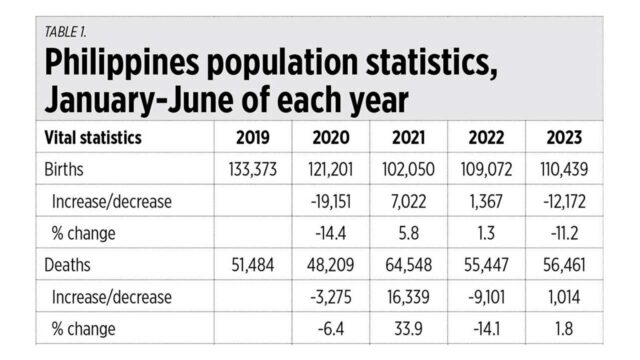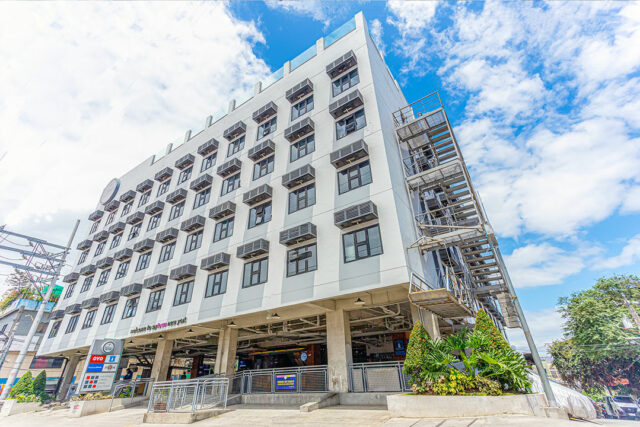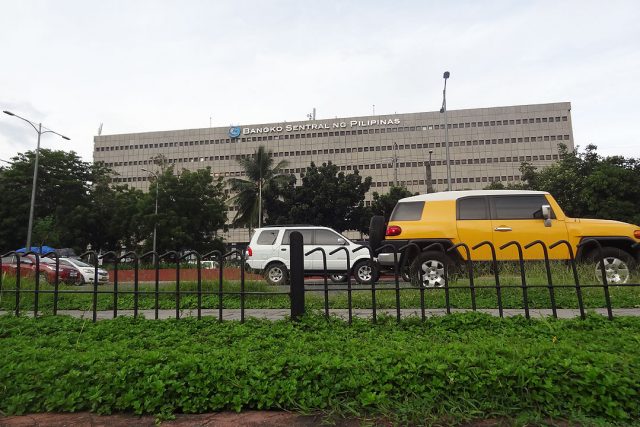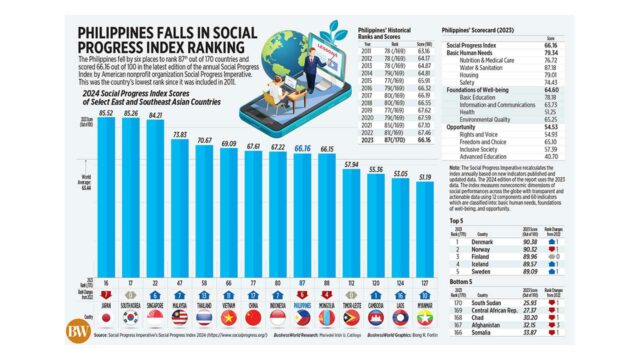Last Friday, Jan. 19, the Philippine Statistics Authority (PSA) released the “Birth, Marriage and Death Statistics for 2023.” I downloaded the Excel file and compared it with my monthly database for these subjects from 2019. To make a comparison for 2023, I got only the first six months of each preceding year.
The results:
1. Births are declining — from 133,400 in January to June 2019, to 102,000 in the same period in 2021, and 110,400 in 2023.
2. Deaths are rising — from 51,500 in January to June 2019, to 64,500 in 2021, and 56,500 in 2023.
3. The net population increase is also falling — from 81,900 in January to June 2019, to 37,500 in 2021, and 54,000 in 2023 (see Table 1).

This is not yet a “depopulation” trend because the net increase (births minus deaths) is still positive, not negative — but the number is declining and so if this trend continues, we should be in a depopulation situation several years from now. That is not good.
Also last week, supersally.substack.com released similar reports about Hong Kong and Thailand. “Hong Kong… Births are Dropping & Deaths are Rising with Deaths nearly Double Births” and “Thailand’s MSM Finally Picks Up Vaccine Harm!” citing the report, “Long COVID, vaccines may cause disease and death: Chula, Rangsit” (Bangkok Post, Jan. 14). The report refers to studies from Chulalongkorn University and Rangsit University.
Since I just came from Hong Kong last week and I saw many old people still working (the HK Jollibee branches, for instance, have local staff who look like they are 60+ years old) or resting in public parks, I pursued the statistics for HK. Also those of Thailand, and Australia. I summarized the numbers below.
Hong Kong births are declining fast, from 52,900 in 2019 to only 32,500 in 2022, while their deaths are rising from 49,000 in 2019 to 63,700 in 2022.
Thailand births also declining, from 596,740 in 2019 to 485,000 in 2022, while deaths are rising from 509,100 in 2019 to 536,700 in 2022.
Australia’s births declined slightly, from 305,800 in 2019 to 300,700 in 2022, while deaths are rising fast, from 164,800 in 2019 to 190,800 in 2022 (see Table 2).
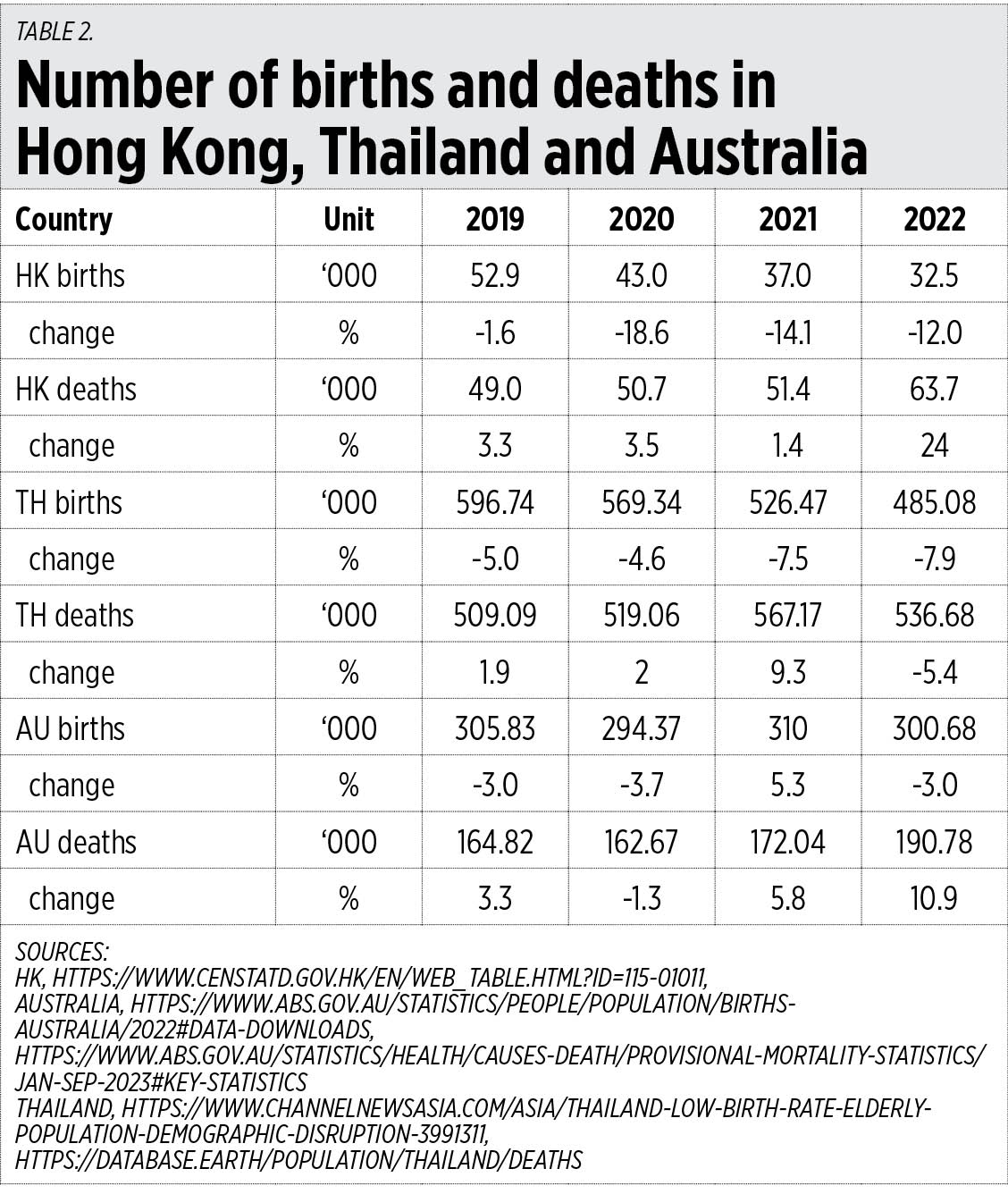
China has a terrible trend: the National Bureau of Statistics reported that in 2023, there were only 9.02 million births (only half as many as in 2017), while there were 11.1 million deaths (up 500,000 on 2022). China’s population shrank by 0.85 million in 2022 and by 2.08 million in 2023, a loss of 3 million people in two years (“China’s falling population could halve by 2100” by Xiujian Peng, AsiaTimes, Jan. 20).
In Europe, these reports somehow summarize the situation: “The decline in birth rates is a widespread trend across Europe” (by Solène Cordier, Le Monde, Jan. 18), “Declining birth rates: A challenge for France’s social model” (Editorial, Le Monde, Jan. 18).
About the decline in births in the Philippines, I hypothesize that there are three reasons why this happened:
1.) State-sponsored population control via the Reproductive Health (RH) law of 2012 (RA 10354);
2.) State-sponsored population control via the COVID-19 lockdown dictatorship plus the implicit mandatory vaccination in 2021-2022; and,
3.) Couples’ voluntary limiting of childbearing.
The reasoning behind No. 1 is wrong because a bigger population is a virtue, not a burden. A bigger population means more entrepreneurs and workers, more producers and consumers. All rich countries take in more (legal) migrant workers and professionals, plus use more robots and machines to sustain their production. But while machines are producers, they are not consumers like people. Robots do not drink and eat in bars and hence do not contribute to growth in the restaurants, hotels and service sector.
Among developing Asian countries with populations of at least 100 million in 2023, one sees that as their population expanded their per capita income also expanded at a much higher rate. Their per capita GDP at purchasing power parity (PPP) values from 2002 to 2022, respectively, were: China, from $4,001 to $18,128; India, from $2,476 to $7,112; Indonesia, from $6,048 to $12,439; Vietnam, from $4,012 to $11,250; the Philippines, from $4,625 to $8,889; Bangladesh, from $2,543 to $6,751; Pakistan, from $3,766 to $5,670. So, the narrative that “more people = more poverty” is false and dishonest.
No. 2 is bad because the lockdown dictatorship unless vax-vax-vaxed caused the Philippines to have the worst GDP contraction in Asia at -9.5% in 2020. The 5.7% growth in 2021 was insufficient to recover the economic damage in 2020. I believe that there is something about the COVID vaccines that contributed to a trend of declining births and rising deaths in many countries around the world.
Reason number 3 is voluntary, couples (married or not) decide what is best for them and their households given their specific needs and aspirations.
Declining births plus rising deaths are terrible trends, economically damaging trends. We should reverse this early via a reversal in public policies now that official data are confirming this trend.
The government procurement of experimental, emergency-use COVID vaccines must stop for public health and economic-fiscal sustainability reasons. Kudos to the Concerned Doctors and Citizens of the Philippines (CDC PH), Juan Dakila Movement, and allied organizations for continuing the campaign on health and individual freedom.
Bienvenido S. Oplas, Jr. is the president of Bienvenido S. Oplas, Jr. Research Consultancy Services, and Minimal Government Thinkers. He is an international fellow of the Tholos Foundation.
minimalgovernment@gmail.com



